Tiefengraber’s performance “WM_EX10” in Ars Electronica Center, credit by Florian Voggeneder.
對藝術創作者來說,藝術"測量"的本質是一種相對性,而非量化的過程,根據藝術工作者的個人經驗與社會背景,藝術作品像是創作者的測量儀器,所呈現的是一個對於時間、空間與文化相對的結果。在Stefan Tiefengraber地創作脈絡中,不僅呈現自己的經驗以及觀察到的事物,同時在他的創作中也提供非大眾系統化且具有個人美學的測量方式。
Stefan Tiefengraber是來自奧地利巴登的媒體藝術家,目前現居於林茲。在一間電影製作公司工作幾年之後,他獲得一筆獎學金並重回大學就讀時間基礎與互動媒體學系,而後就讀介面文化學系,此兩個學系都隸屬於林茲藝術與設計大學。他也說明在剛開始念書時,他認為自己會對錄像藝術有更多的研究,然而他的興趣轉為互動裝置,也對聲音藝術有更多的關注。
測量時間與空間
“Delivery Graphic”是一個藉由運輸服務系統所生成的繪畫。Tiefengraber製作木盒並在裡面放置可移動的鉛筆裝置,之後這些木盒會被寄往世界各地並經過一些國家,但多數這些木盒會被寄到要展示的地點像是藝術工作室或是藝廊,最後作品的視覺影像便是它們到展示地點的旅途。移動式的鉛筆裝置描繪木箱於郵政系統運輸之過程,透過感性和藝術方法去記錄盒子的位移,使運動可視化。
“Delivery Graphic”, photo provided by Stefan Tiefengraber.
一個基於時間的雕塑由聲音和影像構成 - “WM_EX10 WM_A28 TCM_200DV A1.2FPP BK26”的裝置版本。在裝置版中,觀眾可以在電視之間穿越,而聲音被分成幾個頻道,錄製是經由皮膚上的電阻觸碰到電路時產生的短路。經過 Tiefengraber巧妙的安排,老舊的真空管電視時而同步,時而依序播放,而這些預錄下來的片段代表不同的時間,當觀眾走進他的裝置之中,宛如進入一個由藝術家創造的特殊場域,讓觀眾欣賞創作者精心抽出與調配的時空片段。
Tiefengraber: 最早我手邊有一台Sony Walkman,想開來做電路改造實驗,但後來發現光用手指觸碰的聲音就還不賴,不需要焊接或是電路上的更改,自從有個成功的例子之後,我拆開、組合與實驗更多的電路板像是Bontempi keyboards,同時用這些裝置連結我的身體產生不同的聲音效果做表演,下個步驟便是連結真空管電視看會有什麼視覺生成。我曾和 Gregor Göttfert 談過,他給了我一些意見去嘗試把音訊線直接影像輸入到CRT顯示器。類比的音訊跟類比影像訊號是相似的,連接之後產生出來的效果我也非常喜歡,而訊號經由線路,沒有任何延遲,直接發送短路的音頻信號到監視器。
“WM_EX10 WM_A28 TCM_200DV A1.2FPP BK26”, photo provided by Stefan Tiefengraber.
讓作品在博物館/美術館裡大聲喧嘩
在今日,按下機器的按鈕並等待回應的時間必須越短越好,然而Tiefengraber的作品“Analog Delay”完全的反其道而行。他透過在展覽空間周圍設置424個電磁閥和425個開關,以物理方式放大了延遲這件事。當觀者按下第一按鈕時,第一個電磁閥會被觸發並按下下一個按鈕,觸發下一個電磁閥,接二連三的串聯下去,直到最後一個開關觸發裝置的警報鈴。 按鈕和電磁閥發出快速的點擊聲,喀茲喀茲的聲響令人神經緊繃,似乎早就預告下一步將會發生什麼事,果不其然,震耳欲聾的警鈴大響,劃破美術館的寧靜。
企圖打破美術館必須寧靜的潛規則,在"User Generated Server Destruction"也看的到相似的影子。
Tiefengraber: 當我完成作品並讓槌子敲擊電腦時,我才了解到聲響在"User Generated Server Destruction"這件作品上來說十分重要,這比我預期的聲音還要大聲,大到可以衝破美術館想展現的寧靜氛圍,這讓我印象深刻。此外它也影響了其他作品,錘子釋放的聲音和暴力地介入展覽空間。 自此,巨大聲響的手法也可以在我其他裝置作品上看到。
"User Generated Server Destruction", photo provided by Stefan Tiefengraber.
Tiefengraber:首先,我有一個想法是以銷毀一個網站為基礎,在這工作過程中,我想它必須是以物理的方式摧毀 - 網站必須建構在這電腦上,然後我破壞電腦,等於說我建立一台機器,提供給網路用戶摧毀伺服器之可能,透過他們正在使用的網站,以觀看視頻和操作被設置好的網站來破壞伺服器。
反思文化的元素
2015年,他參加了在韓國首爾舉行的MMCA6個月的倉洞藝術駐村計畫,駐村期間所做的藝術創作分別是 “rotating lights”和 “징 noise #1”。 這兩個作品融合了當地文化的元素,也間接地展示了藝術家如何思考不同的文化。一個來自不同文化背景的人從觀察去發覺創作的元素,因此,在從藝術家發展作品的過程中,逐漸轉為文化交流。
“rotating lights”, photo provided by Stefan Tiefengraber.
Tiefengraber:我用於“rotating lights”的日光燈是韓國的一個非常典型的燈,雖然它們正在慢慢消失 ,這種燈在韓國餐館、家庭或是其他場所都很常見, 對我來說,韓國這種燈型和燈光設計的非常特殊,因為迄今為止,我沒有其他亞洲國家看到同款的燈。
Tiefengraber:我對打擊樂器產生的共鳴很有興趣,像是我知道jing,一種韓國的鑼,於是我開始製作的聲音裝置"징 noise #1"。對於這個裝置,我縮短打擊之間的時間與用電磁閥創建一個極噪的高潮,也創造了相對的沉默,當整個作品的迴路設定跑完,噪音在回歸寧靜的展覽空間中漸漸退去。 關於裝置另一部分,我也使用jing和它們材料的導電性來結合我的噪音表演,其中電磁閥的接觸會閉合電路。 在韓國,常常用傳統樂器做實驗音樂,我認為這也使我更容易開始以不同的方式使用這個樂器。
Stefan Tiefengraber與 Dawid Liftinger 合作,共同創立聲音藝術平台 Radio 433 並舉辦了幾場音樂會。 Tresor Linz 是一個在奧地利林茲市中心的新藝術空間,Tiefengraber一年前成為Tresor林茲的聲音活動組織者之一,近期與 Memphis (藝廊)合作,開始舉辦音樂會系列“offxnoff”。
Artist’s website: http://www.stefantiefengraber.com
***
The Artist’s Measuring Instrument - Stefan Tiefengraber
The essence of measuring for artists is relative but not quantitative. According to the artist’s personal experience and social background, the artist’s measuring instrument presents a relative result of time, space, and culture, which is exactly her/his artwork. In the thread of Stefan Tiefengraber’s creations, it hits two sides. One is presenting his observation and experience, the other is his personal approach to aesthetics.
Stefan Tiefengraber is a media artist from Baden, Austria, and now based in Linz. After some years of working in a film production company, he discovered a scholarship to study in the Time-based and Interactive Media department following by the Interface Culture department, which both are in the University of Art and Design Linz. Before the beginning of his study, he thought he would do more research about video art. However, he got interested in interactive installation later, and recently into sound art.
Measuring time and space
“Delivery Graphic” is a generated drawing by postal services. Tiefengraber built wood boxes and left a movable pencil device inside in each of them. Some of the boxes traveled around the world and passed by several countries but most of the time they are send from the artist’s studio to the gallery where the exhibition of the machine will take place and thereby shows the drawing of the journey to each exhibition. The movable pencil captures every movement of the box during the process of postal services. The displacement of boxes was recorded by perceptual and artistic approaches to visualize movement.
A time-based sculpture is formed by sound and video scope - “WM_EX10 WM_A28 TCM_200DV A1.2FPP BK26 in the installation version. The sound, which are recorded and separated into several channels in the installation version, is created by skin resistance when he touches the circuits in the concert. The visitors are invited to walk through between televisions. By Tiefengraber’s brilliant arrangement, the old tube televisions look sometimes like they are synchronized and sometimes are played in sequence. Meanwhile, these pre-recorded clips represent the different time when the viewer gets into his installation as if walking into a special field which is delicately created by the artist to let audiences visit different pieces of time fragments.
Tiefengraber: I have this Sony Walkman and at first I just played around, opened it and wanted to do circuit bending, then I found out that it already works very well only with my fingers and no soldering or permanent modification of the circuits was necessary. I got very good results and continued with combining more than just one board, and I also opened and experimented with Bontempi keyboards. With using several devices at the same time, I could influence the sounds of the different circuits through connecting them with my body. The result was a whole noise performance by just touching the open circuits. The next step was connecting tube televisions to get a visual part and to see what’s coming out. I was talking to Gregor Göttfert and he gave me the hint that led me to plug the audio signal directly to the video input of the CRT monitors. Because the analog audio and analog video signal are very similar, the result is very nice and I like to play around with it. There are lines and sometimes also shapes generated, without any delay by directly sending short circuit audio signals to the monitors.
Make it loud in the gallery/museum
The response time for pressing a button on a machine is getting shorter and shorter and should be as fast as possible nowadays. However, Tiefengraber’s work “Analog Delay” goes totally in the opposite direction. He enlarges the delay in a physical way by setting up over 424 solenoids and 425 switches around the exhibition space. When the visitor presses the first button, the first solenoid is triggered and presses the next button, which triggers on the next solenoid, and so on, until the last switch triggers an alarm. The clicking sound from the chain reaction of buttons and solenoids makes people nervous and panics because it seems like something will happen in next step. As expected, the deafening siren sound from the alarm in the end strongly breaks the silence of the gallery/museum.
The intention of breaking the hidden rule that the gallery/museum should be kept quiet is also visible in his work “User Generated Server Destruction”.
Tiefengraber: The importance of the sound the installation "User Generated Server Destruction" produces, when the hammers hit the server, I figured out after I finished and built the installation. I knew that it will become loud but when I finally heard the very loud sound breaking with the silence, that is normally present in galleries and museums, I was very impressed of the effect. Beside the other impact the installation produces, the sound and violence the hammers release are an intervention in the exhibition space. Loud sound can be also found in other installations I work since then.
Tiefengraber: First, I had the idea to destroy a website and then in the process of working on this project, I was figuring out that it has to be physical - the website has to be on a computer, so I have to destroy the computer. That made me building a machine that gives the internet user the possibility to destroy the webside by smashing the server that is hosting the website with hammers that can be operated via the website they are using to see a video stream and to operate the installation.
Rethink the elements of culture
In 2015, he took part in the MMCA Changdong residency program in Seoul, Korea for six months. The artworks he made during this artist residency are “rotating lights” and “징 noise #1”. This two works mix the elements of local culture and also indirectly show how the artist thinks about the different culture. It is an observation of the people who come from different culture backgrounds that leads to the discovery of the elements to make creations. Thus, in this measuring process which is developed from the artist, it gradually turns into culture exchange.
Tiefengraber: The fluorescent lights I used for the installation ‘rotating lights’ are a very typical light source in Korea, although they are slowly disappearing. They can be found for example in restaurants and homes but also in many other places. For me the design of the lamps and lights are very typical for Korea as I only saw those there and in no other Asian country so far.
Tiefengraber: Interested in the resonance of percussion instruments and knowing the jing, a korean gong, I started to work on the sound installation ‘징 noise #1’. For this Installation I use the shortening of the breaks between hitting the jings with solenoids to create a climax that ends in noise and also creates the counterpart - silence, when the loop is finished and noise fades to the quiet atmosphere sound of the exhibition space. Alongside the installation I also used the jing and the conductivity of the material they are made from to combine them with my noise performances where the contact of the hitting solenoid is closing the circuit. In Korea, there are very often traditional instruments used in experimental music, I think that made it also easier for me to start using this instrument in a different way.
Stefan Tiefengraber has organized several concerts with Radio 433 which is a platform to present sound art and is a cooperation with Dawid Liftinger. Since one year Tiefengraber is one of the sound event organizers in Tresor Linz, a new alternative art space in the heart of Linz/Austria. Recently, the concert series ‘offxnoff’ started which is a collaboration with Memphis (Gallery).
Artist’s website: http://www.stefantiefengraber.com


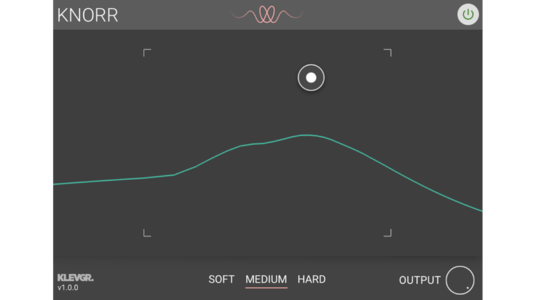
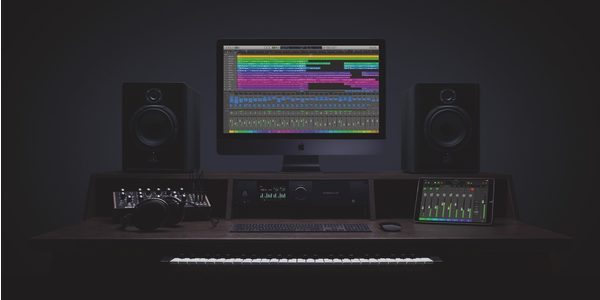
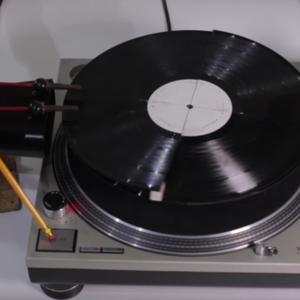

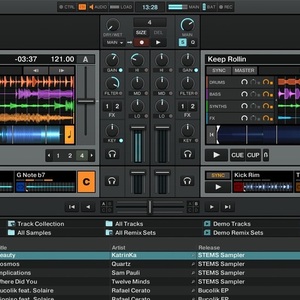
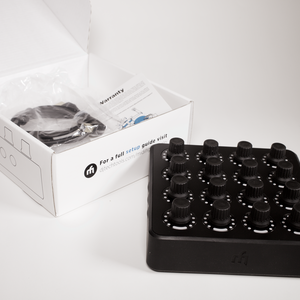
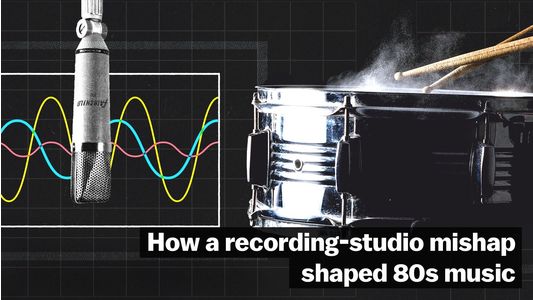

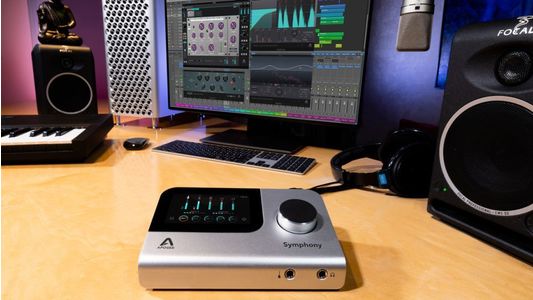
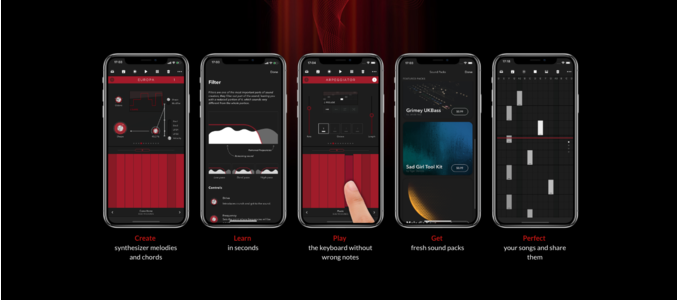






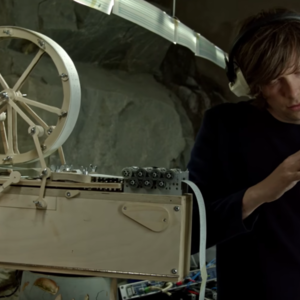
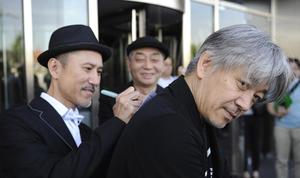
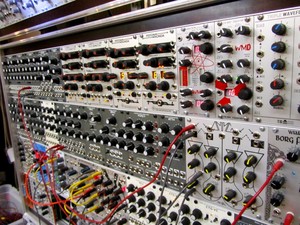
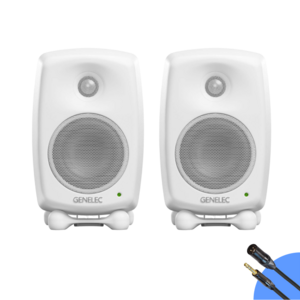
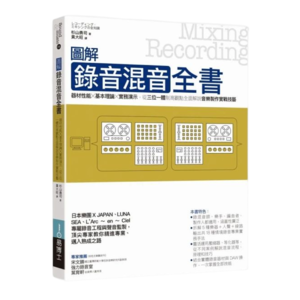



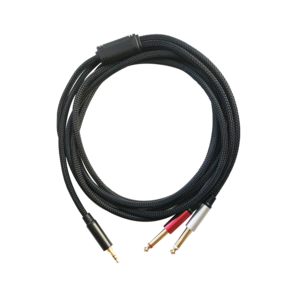
討論區
目前尚無評論